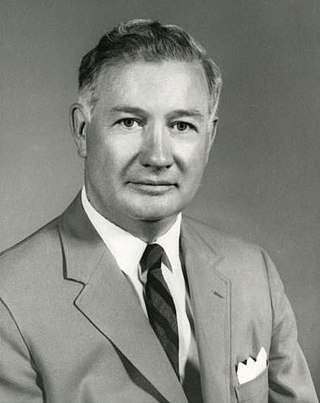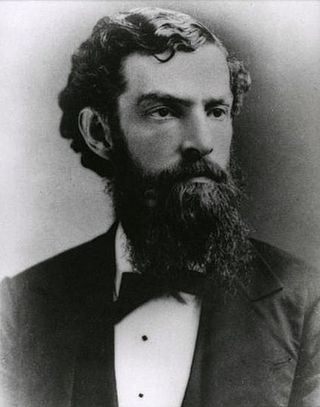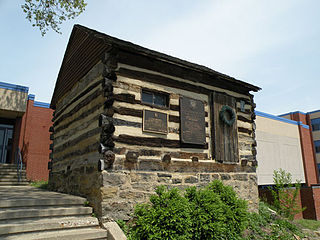
Washington &Jefferson College is a private liberal arts college in Washington,Pennsylvania,United States. The college traces its origin to three Presbyterian missionaries in the 1780s:John McMillan,Thaddeus Dod,and Joseph Smith. Early schools grew into two competing academies,with Jefferson College in Canonsburg,Pennsylvania,and Washington College in Washington. The two colleges merged in 1865 to form Washington &Jefferson College. The 60-acre (24 ha) campus has more than 40 buildings,with the oldest dating to 1793. The college has a strong history of competing literary societies,dating back before the union of Jefferson and Washington Colleges. The athletic program competes in NCAA Division III. Nearly all students live on campus and roughly one-third are members of fraternities or sororities.
David Bradford (1762–1808) was a successful lawyer and deputy attorney-general for Washington County,Pennsylvania in the late 18th century. He was infamous for his association with the Whiskey Rebellion,and his fictionalized escape to the Spanish-owned territory of West Florida with soldiers at his tail. He was later pardoned by President John Adams for his actions. Today,his family's home in Washington,Pennsylvania is a national landmark and museum.

Howard Jerome Burnett was a president of Washington &Jefferson College.

Ralph Cooper Hutchison was president of Washington &Jefferson College and Lafayette College.

Simon Strousse Baker was the 6th president of Washington &Jefferson College.

Matthew Brown was a prominent Presbyterian minister and president of Washington College and Jefferson College. Next to John McMillan,Brown was the most important figure to education in Western Pennsylvania.
John Watson was the first principal and president of and professor of moral philosophy at Jefferson College.
William McMillan was elected the fourth president of Jefferson College on September 24,1817.

George Price Hays was the 2nd president of Washington &Jefferson College.

Jonathan Edwards (1817–1891) was the first president of Washington &Jefferson College following the union of Washington College and Jefferson College.

Frederick William Hinitt was the 4th president of Washington &Jefferson College.

McMillan Hall is a building on the campus of Washington &Jefferson College in Washington,Pennsylvania,United States. Built in 1793,it is the only surviving building from Washington Academy. It is the eighth-oldest academic building in the United States that is still in use for its original academic purpose and is the oldest surviving college building west of the Allegheny Mountains.

The Old Gym is a historic building at Washington &Jefferson College in Washington,Pennsylvania. It currently houses a modern exercise facility featuring cardiovascular,resistance,and strength-training equipment. The building also features a three-lane indoor track suspended above the main floor.

Hays Hall was a residence hall at Washington &Jefferson College. The architectural work was performed by Frederick J. Osterling and it was named after President George P. Hays. Construction was completed in 1903 and the new "fireproof" building was opened to Washington &Jefferson Academy students. Rooms were arranged in a suite style,with communal bathrooms on each floor,and shower baths on the 5th floor. In 1912,the Academy closed and Hays Hall was used by Washington &Jefferson College students. At various times,Hays Hall housed the bookstore and a dining hall. By 1968,Hays Hall had deteriorated to the point where it no longer able to house students,but the bookstore remained. In 1982,the building was declared a fire hazard and closed for all uses. While various efforts sought to renovate or restore Hays Hall,including a push to have it named a historical landmark,Hays Hall was demolished in 1994.

The history of Washington &Jefferson College begins with three log cabin colleges established by three frontier clergymen in the 1780s:John McMillan,Thaddeus Dod,and Joseph Smith. The three men,all graduates from the College of New Jersey,came to present-day Washington County to plant churches and spread Presbyterianism to what was then the American frontier beyond the Appalachian Mountains. John McMillan,the most prominent of the three founders because of his strong personality and longevity,came to the area in 1775 and built his log cabin college in 1780 near his church in Chartiers. Thaddeus Dod,known as a keen scholar,built his log cabin college in Lower Ten Mile in 1781. Joseph Smith taught classical studies in his college,called "The Study" at Buffalo.

The relationship between the City of Washington,Pennsylvania,and Washington &Jefferson College spans over two centuries,dating to the founding of both the city and the college in the 1780s. The relationship between the town and college were strong enough that the citizens of Washington offered the college a $50,000 donation in 1869 in a successful attempt to lure the Washington &Jefferson College trustees to select Washington over nearby Canonsburg as the consolidated location of the college. The relationship was strained through the latter half of the 20th century,however,as the college pursued an expansion policy that clashed with the residential neighborhood. The college's frustrations grew after preservationists unsuccessfully attempted to pass laws prohibiting the college from demolishing certain buildings that were listed on the East Washington Historic District. Relations were so bad that residents and college officials engaged in a shouting match at a meeting. Local preservationists also unsuccessfully tried to block the demolition of Hays Hall,which had been condemned.














